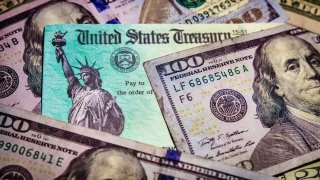The Federal Reserve's High Interest Rates Could Morph Into a Crisis
A high interest rate policy is unadvisable in the face of a looming commercial real estate and international economic crisis.
When it comes to economics, there are few things about which we can be entirely sure. However, following today’s stronger-than-expected employment numbers, we can be sure that the Federal Reserve will not cut interest rates anytime soon. Whether the Fed’s current position of wishing to keep interest rates at an elevated level will, in the end, prove to have been the right decision is quite another matter.
For all of the Jerome Powell Fed’s faults, such as allowing inflation to rip to a multi-decade high, the Fed has had the virtue of being refreshingly transparent in its decision-making. It has stuck to its word to remain data-dependent on the timing of its eventual decision to cut interest rates. Specifically, it was clear that it would not start cutting rates until it saw convincing evidence that inflation was coming down on a sustainable basis to the Fed’s 2 percent inflation target. Furthermore, it has expressed doubts that this would be possible as long as the economy remained strong, unemployment stayed very low, and wages increased rapidly.
Today’s strong employment numbers will give the Fed every reason not to cut interest rates at its next policy meeting. Indeed, an economy adding 300,000 jobs a month and with an unemployment rate as low as 3.8 percent will confirm the Fed’s view that the economy is too strong to feel comfortable that inflation will come down to its 2 percent target on a sustainable basis.
One weakness of the Fed’s backward-looking monetary policy-making approach is that it fails to recognize the fact that monetary policy operates with long and variable lags. If, after raising interest rates by 5.25 percentage points, or at the fastest pace since the early 1980s, the Fed waits for clear signs of economic weakness to cut interest rates, it runs a serious risk. Namely, it might risk failing to meet the employment part of its dual mandate of price stability and maximum employment. Such an error would parallel its error in 2021 when it let the inflation genie out of the bottle without raising interest rates in time.
Another weakness of a backward-looking Fed is that it does not give sufficient consideration to unfolding developments at home and abroad that could adversely impact the U.S. economic outlook in the second half of the year. This is particularly regrettable at this juncture. We have a slow-motion real commercial property crisis at home and a Chinese economy dealing with a bursting housing and credit bubble abroad.
Early last year, a regional bank crisis centered on Silicon Valley Bank required large-scale intervention by the Fed and the Federal Deposit Insurance Corporation. Now, we could soon have another regional bank crisis that would cause a credit crunch for the all-important small and medium-sized business sector. The regional banks are highly exposed to commercial real estate lending, and property developers need to roll over some $930 billion in maturing loans this year. It is difficult to see how this will be done without debt restructuring, with office vacancy rates at record levels and interest rates so high. A recent National Bureau of Economic Research Study estimated that close to 400 small and medium-sized banks will likely fail over the next few years because of the commercial real estate crisis.
The bursting of China’s housing and credit market bubble poses another threat to the United States and world economic recoveries. There are already worrying signs that China might try to export its way out of its domestic manufacturing overcapacity problem. Especially in a U.S. election year, that risks causing a further souring of the already strained U.S.-China trade relations.
Over the past year, inflation has come down sharply. That means the Fed’s interest rates have become increasingly restrictive in inflation-adjusted terms. While high interest rates might have been appropriate earlier this year, it is questionable whether they remain suitable for a lower inflation setting at a time when downside risks to the recovery both at home and abroad are in plain sight.
About the Author: Desmond Lachman
Desmond Lachman is a senior fellow at the American Enterprise Institute. He was a deputy director in the International Monetary Fund’s Policy Development and Review Department and the chief emerging market economic strategist at Salomon Smith Barney.
Image: Shutterstock.com.


